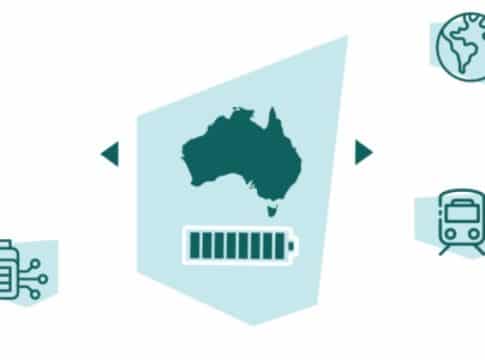Australia Unveils Ambitious National Battery Strategy to Power Clean Energy Future
The Australian government unveiled the country’s first National Battery Strategy, detailing plans to establish a domestic battery industry. The strategy aims to develop processing capacity for upgrading raw minerals into processed battery components. This will enable Australia to supply battery-active materials globally, as stated by Prime Minister Anthony Albanese’s government.
Key elements of the strategy include building energy storage systems to bolster renewable power generation in the national grid and leveraging industry expertise to develop safer, more secure batteries for grid connection. Additionally, Australia plans to create batteries for its transport manufacturing sector, including heavy vehicle production.
Federal Budget Boosts Battery Breakthrough
The strategy is funded by Australia’s 2024–2025 federal budget, which allocates A$523.2 million for the Battery Breakthrough Initiative. The initiative offers production incentives to enhance battery manufacturing capabilities. Furthermore, the Building Future Battery Capabilities plan provides A$20.3 million to support battery research.
Prime Minister Albanese emphasized the importance of this initiative, saying that:
“We want to make more things here and with global demand for batteries set to quadruple by 2030, Australia must be a player in this field. Batteries are a critical ingredient in Australia’s clean energy mix. Together with renewable energy, green hydrogen, and critical minerals, we will meet Australia’s emission reduction targets and create a strong clean energy manufacturing industry.”
Australia aims to transition its electricity grid to 82% renewable energy by 2030, supporting the country’s commitment to reduce emissions by 43% within the same period.
The federal government has also announced an A$7 billion tax incentive for critical mineral producers. It aimed at bolstering domestic supply chains for raw materials essential to the energy transition.
RELATED: Australia Has A US$400B Carbon Capture Opportunity, Wood Mackenzie Says
Unveiled as part of the 2024–2025 federal budget, the Critical Minerals Production Tax Incentive will cover 10% of relevant processing and refining costs for 31 critical minerals. This incentive will apply to minerals processed and refined between 2027-2028 and 2039-2040, extending up to 10 years per project.
Future Made in Australia: Jobs, Innovation, and Sustainability
This initiative is a key component of the government’s A$22.7 billion Future Made in Australia package. It is designed to create jobs and strengthen the economy while striving for net zero greenhouse gas emissions by 2050. The government sees it crucial in helping the country meet its 82% renewable energy target and cement its position in global battery supply chains.
Prime Minister Albanese and Treasurer Chalmers highlighted that the plan aims to maximize economic and industrial benefits from the global shift to net zero, securing Australia’s position in the evolving economic and strategic landscape.
Additionally, the government will allocate A$14.3 million to enhance trade competitiveness in critical minerals and A$10.2 million for prefeasibility studies of common-use infrastructure to support the sector.
Australia’s critical minerals list includes lithium, nickel, cobalt, vanadium, graphite, and rare earths.
The country is a leading global producer of lithium, iron ore, and bauxite, and boasts the largest reserves of lithium, iron ore, zinc, and vanadium, according to S&P Global Market Intelligence and federal government data.
The Prime Minister emphasized the need for Australia to enhance its competitiveness in the global metals and battery investments market, particularly in response to the US Inflation Reduction Act and other international incentives promoting domestic supply chains.
Albanese noted that “Australia cannot compete dollar-for-dollar with the US Inflation Reduction Act, but this is a competition, not an auction.” He acknowledged the global competition, noting initiatives in the US, EU, Japan, Korea, and Canada aimed at strengthening their industrial and manufacturing bases.
Below is the country’s battery actions identified in the federal budget 2024-2025. Amounts are in Australian dollars.
Industry Praise and Economic Resilience
The Association of Mining and Exploration Companies (AMEC), which includes over 500 members such as Fortescue Ltd. and Albemarle Lithium Pty. Ltd., praised the tax incentive.
AMEC’s chief executive, Warren Pearce, stated that the incentive would spur new projects and industries, driving economic growth and job creation, while maintaining Australia’s high standard of living. He emphasized that this proven mechanism would reward those taking risks in new and costly industries, promising significant returns on investment.
AMEC advocates for a 10% federal production tax credit for downstream materials producers to mitigate Australia’s production cost disadvantages compared to countries like the US. Pearce believes the proposed legislation could be a “game-changer” for clean manufacturing and critical minerals investment.
Amanda McKenzie, CEO of the Climate Council, also expressed support. She remarked that the legislation could catalyze immediate investments in clean energy sectors.
Indeed, Australia’s National Battery Strategy marks a significant step toward a sustainable energy future, backed by substantial federal investment. By enhancing battery production and innovation, the strategy aims to strengthen the nation’s position in the global market, create jobs, and support the transition to renewable energy.
READ MORE: Is the Battery Boom Heating Up?
The post Australia Unveils Ambitious National Battery Strategy to Power Clean Energy Future appeared first on Carbon Credits.



